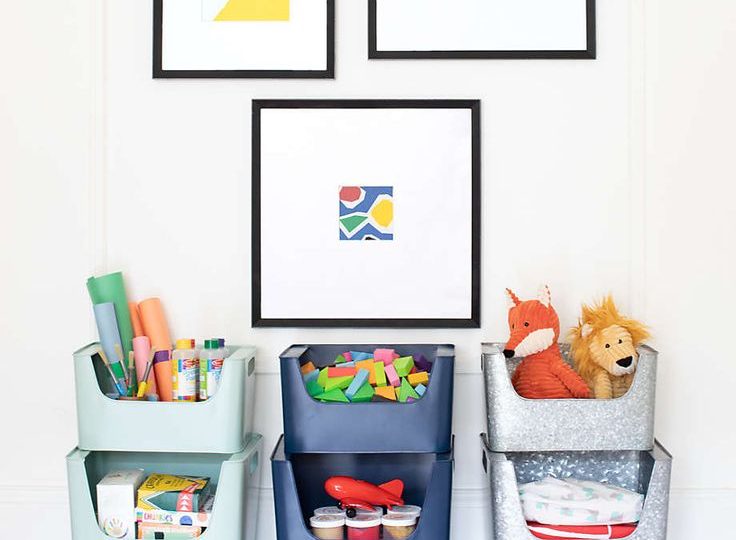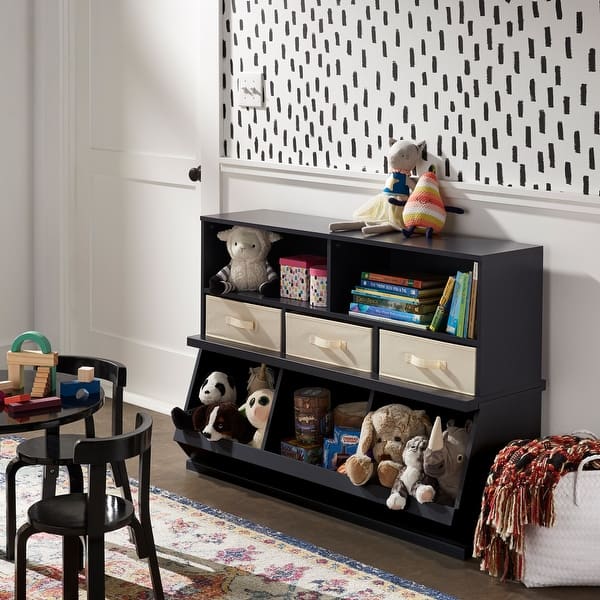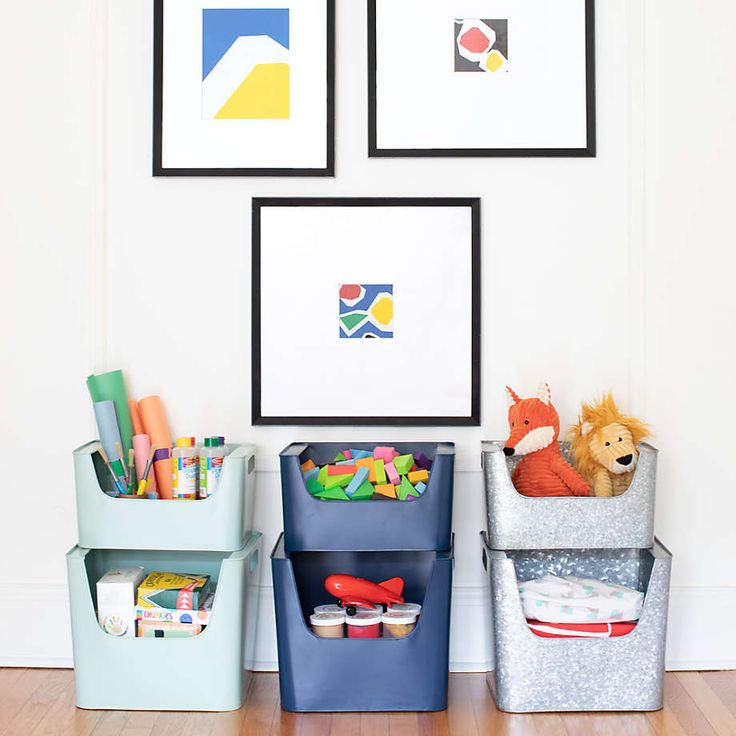
Storage System: Smart Ways to Organize with Stacking Toy Bins
The Benefits of Stacking Toy Bins for Storage
Stacking toy bins are an excellent solution for storage dilemmas. They offer a variety of benefits that make organizing toys both simple and effective. First and foremost, stacking toy bins easily maximize vertical space. This is crucial in smaller living areas where floor space is precious. By stacking upward, these bins allow you to store the same number of toys in a fraction of the space.
Furthermore, these bins provide clear visibility of their contents. This feature makes it easier for both children and parents to identify and retrieve toys, reducing the likelihood of a messy search process. Stacking toy bins are also highly flexible. You can rearrange them to fit various spaces and adjust the layout as your child’s toy collection grows or changes.
Durability is another key advantage. Many stacking toy bins are made from robust materials designed to withstand the rough and tumble of playtime. This means they can handle the weight of numerous toys and resist wear and tear over time. Plus, they are often easy to clean, which is essential for maintaining a healthy play environment.
Lastly, stacking toy bins provide an aesthetic advantage. Available in a range of colors and designs, they can fit seamlessly into the decor of a child’s room or play area, contributing to a tidy and attractive space. The benefits of stacking toy bins make them a smart choice for anyone looking to create an organized and functional storage system for toys.
How to Select the Best Stacking Toy Bins for Your Needs
When selecting stacking toy bins, consider a few key factors. Size is crucial. Measure your space to ensure a good fit. Think about the number and size of toys the bins will hold. Look for bins that can adjust to fit both large and small toys.
Material matters too. Choose bins made from durable, easy-to-clean materials. Plastic is common, but wood might match your decor better. Bins with smooth edges are safer for kids.
Design is important. Aim for bins that look good and function well in your space. Bright colors or clear bins are great for kids to see and select toys. Also, consider if you want bins with lids to stack easily and keep dust out.
Versatility is a plus. Some bins come with interlocking systems to create stable, tailor-made structures. Ensure the bins can grow with your child’s needs. Bins that can be used for other purposes later add value.
Lastly, check reviews. Other parents’ experiences can guide you towards the best choice. Keep these factors in mind to find the perfect stacking toy bins for your family’s needs.
Innovative Stacking Methods for Maximizing Space
To make the most of stacking toy bins, innovative methods can boost your space-saving game. Here are a few approaches to consider:
- Vertical Stacking: Arrange the bins on top of each other. This utilizes height and saves floor space. Make sure the base is sturdy.
- Pyramid Stacking: Place the bins in a pyramid shape. This provides stability and easy access to the bins at the bottom.
- Wall-adjacent Stacking: Push the stacked bins against a wall. This anchors the structure, giving extra safety for kids.
- Corner Stacking: Tuck the bins into a corner. It utilizes often-unused space and keeps the area open.
- Modular Stacking: Use bins that fit together like puzzle pieces. You can create a storage wall that’s both functional and playful.
- Stair-like Stacking: Stack bins with descending heights. It looks great and allows children to reach the top bin easily.
Remember, always secure the stacked bins. Use wall straps or other safety measures to prevent tipping. With these innovative stacking methods, you’ll maximize your storage potential and keep toys neatly organized.
Organizing Toys by Category with Stacking Bins
Organizing toys by category simplifies clean-up and playtime. Color-coded bins can divide toys by type, like dolls, cars, or blocks. Labels help too. They guide children to put toys in the right bin. It’s easier to find specific toys this way.
Parents can sort by age-appropriate groups. This ensures younger kids get safe toys. Bins can also separate educational toys from others. This keeps learning materials together.
For mixed-use bins, adjustable dividers work well. They create sections within a bin for different toys. This method keeps related toys close, but still sorted.
Stacking toy bins with categories make playtime efficient. Kids spend less time searching and more time playing. Plus, it teaches organization skills early on.
Safety Tips When Using Stacking Toy Bins
While stacking toy bins are great for organization, safety should always come first. Here are some precautions:
- Ensure Stability: Check that each bin is secure before stacking. A stable base prevents accidents.
- Avoid High Stacks: Don’t stack bins too high. This lowers the risk of them tipping over.
- Use Wall Anchors: Secure the bins to the wall with straps or anchors. This is extra important in children’s areas.
- Check for Sharp Edges: Choose bins with smooth edges to protect kids from cuts.
- Keep Heavy Toys Low: Store heavier items in the bottom bins. This keeps the stack balanced.
- Monitor Bin Weight: Don’t overload bins. Too much weight can cause the bins to break or collapse.
- Regular Inspections: Check the bins regularly for any wear or damage. Replace them if needed.
By following these safety tips, you can enjoy the benefits of stacking toy bins without worry. Keep them secure, at a safe height, and regularly check for any potential hazards. These steps will ensure your stacking toy bins remain a safe storage solution for your child’s play area.
Creative Labeling Strategies for Stacking Toy Bins
Effective labeling can transform the way you use stacking toy bins. Here are some creative strategies:
- Color Coding: Assign a color to each type of toy. This makes it simple for kids to find what they’re looking for.
- Picture Labels: Use pictures for labels. It’s perfect for children who can’t read yet.
- Word Labels: For older kids, use written labels. It helps them learn to categorize and read.
- Numbered Bins: Give each bin a number. It teaches numbers and organizes toys by usage frequency.
- Theme-Based Labels: Label by themes. Have ‘animal’ bins, ‘car’ bins, etc. It sparks kids’ imagination.
- Magnetic Labels: Use magnetic labels for metal bins. You can switch them out as toy collections change.
- Chalkboard Labels: These allow you to quickly change the label when needed. They’re fun for kids to write on.
- Clear Pockets on Bins: Slip in a card with a label. You can easily swap it out for updates.
With these strategies, your stacking toy bins will boast a personal touch that enhances sorting, play, and learning. Remember to keep labels simple and clear. Teach kids to help with labeling for a learning experience. Stick to a consistent labeling system, and you’ll maintain an organized play area with ease.
Maintaining an Organized Play Area with Stacking Bins
Maintaining an organized play area is key to a tidy home. Stacking toy bins can help greatly. Here’s how:
- Routine Clean-ups: Encourage regular toy sorting. This prevents mess from building up.
- Designated Bin Areas: Assign bins to specific areas. It keeps the space orderly.
- Kids’ Participation: Involve children in organizing. They learn and the area stays neat.
- Regular Decluttering: Go through toys often. Remove ones no longer used or broken.
- Visual Accessibility: Keep the bins at eye level for kids. This way, they can find and put away toys easily.
- Seasonal Rotation: Switch out toys based on seasons. This keeps the collection fresh and manageable.
Remember, an organized play area with stacking toy bins is more than tidy. It’s a space where creativity and learning thrive. Stick to a clear system and you’ll see great results.
Stacking Toy Bins as a Tool for Teaching Kids to Tidy Up
Stacking toy bins are not only great for organization, but they also teach kids tidiness. With clear homes for each toy, children learn to take care of their belongings. Here’s how to use these bins as teaching tools:
- Make Clean-Up Fun: Turn tidying up into a game. Challenge your child to stack the bins faster each time.
- Responsibility Through Routine: Assign your child the task of organizing their toys daily. This builds a sense of responsibility.
- Reward Systems: Offer incentives for keeping bins neat. Stickers or an extra story at bedtime work well.
- Lead by Example: Show them how it’s done. Children often mimic adults, so if they see you organizing, they’ll likely follow.
- Educational Sorting: Encourage them to sort toys by color, size, or category as they put them away. It’s educational and fun.
- Personalize the Bins: Let them decorate labels. They’ll take more pride in their bins and in keeping them tidy.
By using stacking toy bins effectively, you instill valuable life skills. Your child learns organization, sorting, and the importance of cleaning up after play. Plus, they do it in a space-savvy and safe way. Keep reminding them to put their toys away, and soon it’ll turn into a habit. Remember, consistency is key for keeping both the play area and the lessons learned in top shape.


